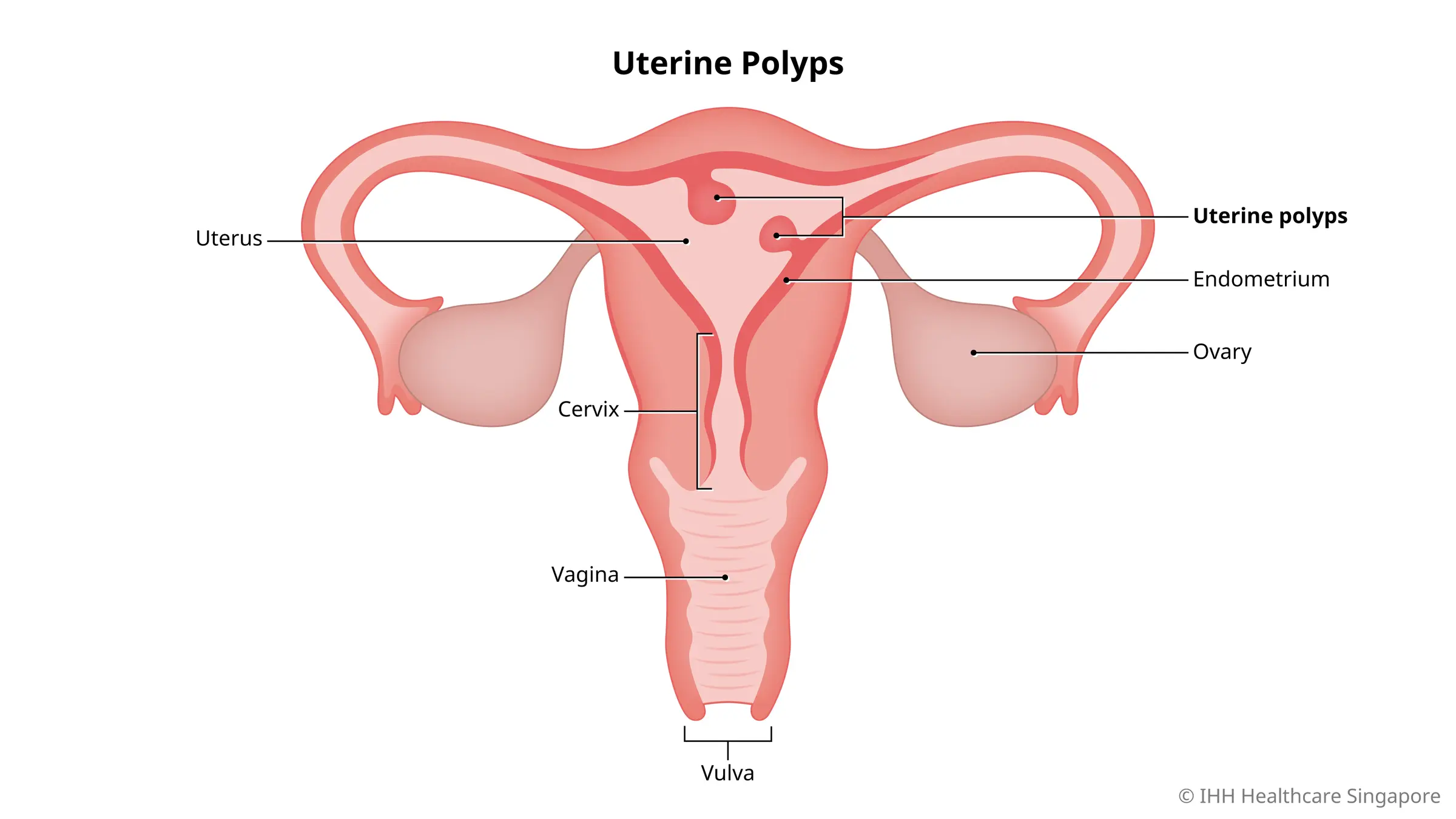Uterine (Endometrial) Polyps
What are uterine (endometrial) polyps?
Uterine polyps, also known as endometrial polyps, are soft overgrowths that arise from the inner lining of the uterus, the endometrium. Polyps can have a broad base arising from the uterine lining or a thin stem extending into the uterine cavity.
Generally, uterine polyps are benign or non-cancerous, but may cause issues related to menstruation and fertility.
It is common for women with menstruation to have polyps, and it less commonly seen in women in menopause.
Uterine polyps vs fibroids
Like uterine polyps, fibroids are overgrowths but do not appear in the endometrial lining. They are overgrowths of the muscle inside the uterine walls.
In addition to heavy bleeding, fibroids also cause pain, and difficulty in urination and constipation. Learn more about growths such as fibroids, polyps, and ovarian cysts, and get a more in-depth look at uterine fibroids and their associated potential complications.
What are the symptoms of uterine (endometrial) polyps?
If you have uterine polyps, you may experience the following:
- Irregular menstruation
- Very heavy bleeding during periods
- Bleeding or spotting between menstrual periods
- Vaginal spotting or bleeding post menopause
- Infertility
What causes uterine (endometrial) polyps?
The exact reason behind the formation of uterine polyps is unknown.
However, changes in the level of the hormone oestrogen is linked to endometrial polyps. This is because oestrogen is the hormone that encourages the endometrial lining to grow. An overgrowth of endometrial lining is thought to cause endometrial polyps.
What are the risk factors for uterine (endometrial) polyps?
Risk factors for uterine polyps include:
- Obesity
- Having polycystic ovarian syndrome
- High blood pressure
- Use of tamoxifen, a drug for breast cancer






